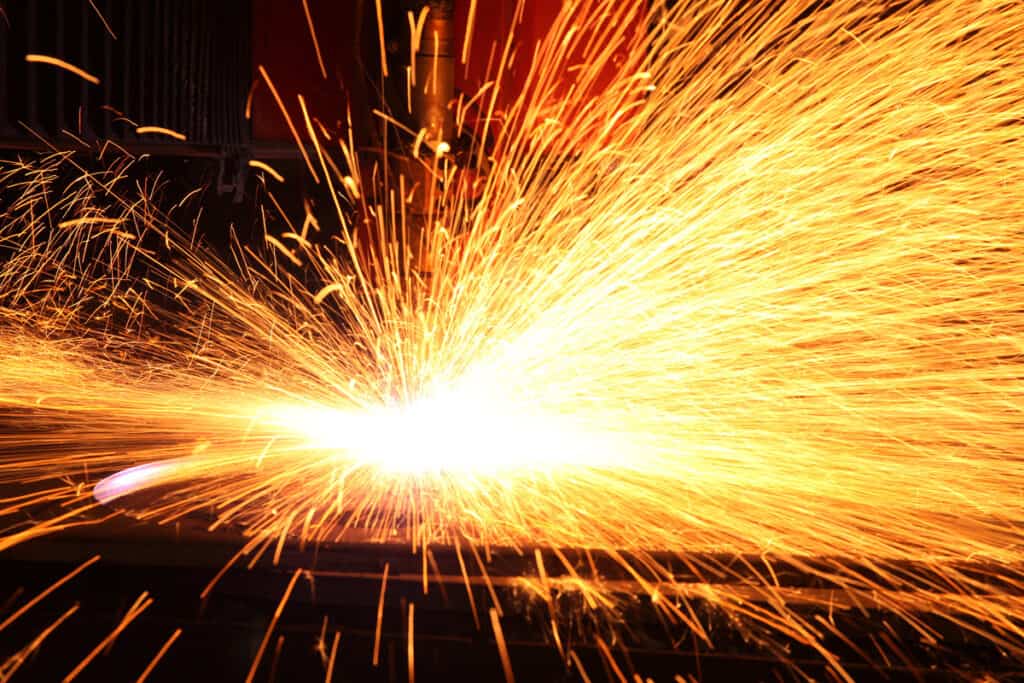
Certain metals, known as ferrous metals, spark when struck due to their iron content.
The most common are iron, steel, and alloys like ferrocerium.
When metal is struck, it can produce sparks due to a process called frictional heating. The impact generates heat, causing small particles to break off the metal surface. These particles react with oxygen in the air, leading to a brief combustion that manifests as a spark. The phenomenon is commonly observed in metal-on-metal contact, such as striking a hammer against an anvil.
Table of Contents
Here’s how the process works:
Iron is a pyrophoric substance that spontaneously catches fire at a relatively low temperature when exposed to air.
All steels contain iron (although some steels contain significantly more iron than others).
When you strike a piece of high-iron-level steel with something like the sharp edge of a knife or a piece of flint or quartz, it causes very small pieces of fresh unoxidized iron to “shower” into the air.
When exposed to the oxygen in the air these tiny pieces of iron quickly oxidize and catch fire, creating a “shower” of sparks.
This is the basic principle that makes ferro rods and Flint and Steel work, except that they also contain other metals.
For more information, see How are Ferro Rods Made or Is A Ferro Rod Better Than Flint?
FAQs
Why does metal spark when struck?
Metal sparks when struck because striking steel with a harder substance releases extremely small iron particles into the air. These iron particles spontaneously ignite when exposed to the air, creating sparks.
What types of metals typically produce sparks?
Ferrous metals that contain iron, such as steel and iron alloys like ferrocerium, will produce sparks when struck due to their iron content. Titanium, while not a ferrous metal, also produces bright white sparks.
How does the sparking process work on a molecular level?
When a piece of high-iron steel is struck with a hard, sharp object, tiny pieces of fresh, unoxidized iron break off and become exposed to the air. Due to iron’s pyrophoric properties, these iron particles quickly oxidize and catch fire, creating a shower of sparks.
Do all metals produce sparks when struck?
No, only certain metals produce sparks when struck. Non-ferrous metals like copper, brass, and aluminum generally do not throw sparks. The ability to spark depends on the metal’s iron content and chemical properties.
What affects the amount and color of sparks produced?
The carbon content of the steel influences the sparking characteristics. High-carbon steels produce more sparks than low-carbon steels. The color of the sparks can also vary based on the specific composition and alloying elements in the metal.
Are the sparks produced by striking metal dangerous?
Yes, the sparks and molten metal particles ejected when striking or grinding metal can be very hot and can start fires if they land on flammable materials. Safety precautions should always be taken when working with metal tools and grinding operations.


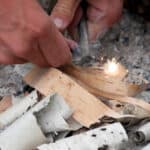
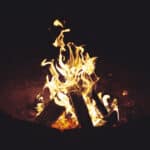
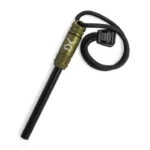
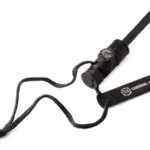

Leave a Reply